Введение
Независимо от того, нравится нам это или нет, в панд мы попадались серии или DataFrame с мультииндексом. Многоиндексный часто генерируются из метода .groupby () или .set_index (). Мы склонны использовать reset_index (), чтобы установить его обратно к нормальной серии / DataFrame. Но в какой-то ситуации, зная, как справиться с мультииндексом будет benifit. И метод, который мы использовали в мультииндексе даст нам более глубокое понимание DataFrame и серию.
В этой статье мы будем говорить о:
1. Что такое многоиндексные Series / DataFrame?
2. Как выбрать мульти-индекс?
3. Как Concat два многоиндексных DataFrame?
Что такое многоиндексные Series / DataFrame?
Визуально мы будем знать, какие серии / DataFrame является многоиндексным. Но также мы можем использовать .index, чтобы проверить, если это многоиндексное. Если это так, панды покажут в возвращаемых значениях.

On a deeper level, a multi-index Series/ DataFrame is no more than a Series/ DataFrame, but has an added-dimention. Which makes a multi-index Series acts more like an normal DataFrame. We will talk about this again in the next section.
A multi-index can be .unstack(), and If we .unstack() a multi-index Series, we will have a normal index DataFrame.
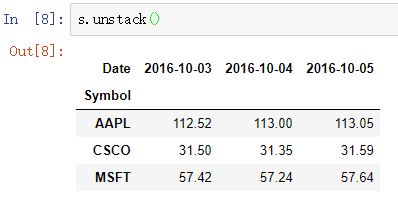
How to select a multi-index?
1. Multi-index Series
Using .loc[], from outer level to inner level. Using .loc[:, ] to skip the outer level.
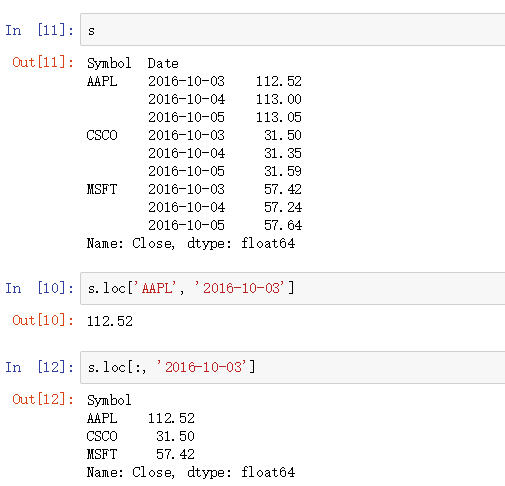
If we look carefully, this .loc[] operation is exactly the same as we are choosing a DataFrame. Frist element is rows, comma, and second element is columns. Actually it is the DataFrame we .unstack() from original multi-index Series.
2. Multi-index DataFrame
Using .loc[], from outer level to inner level. But different with Series, because it is already a DataFrame, we can not just use a comma to seperate. We will use a () to tell Python they are both for rows. Then use a comma to choose columns.
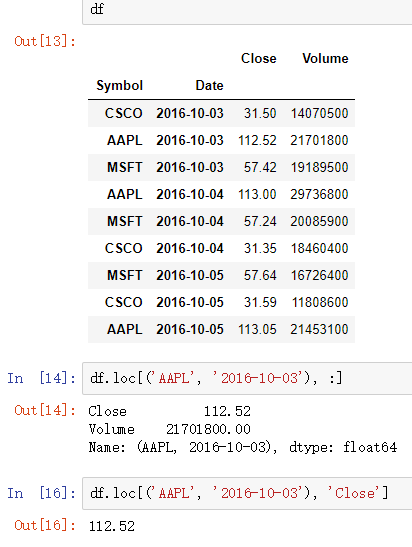
Both outer level and inner level can be a list, for our multi-selection.
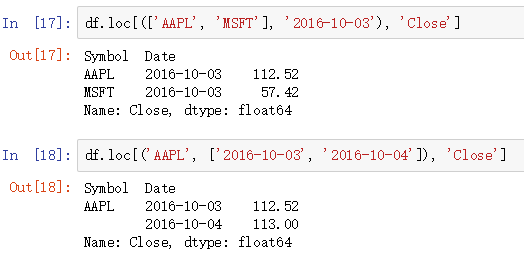
To skip the outer level is a little bit tricky. We may think of:
df.loc[(:, '2016-10-03'), 'Close']
But actually this can not work. And the correct way is using slice(None).
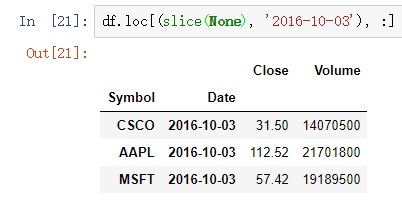
How to concat two multi-index DataFrame?
If we have new columns to add, we can use pd.merge(). But we have to use arguments left_index=True and right_index=True.
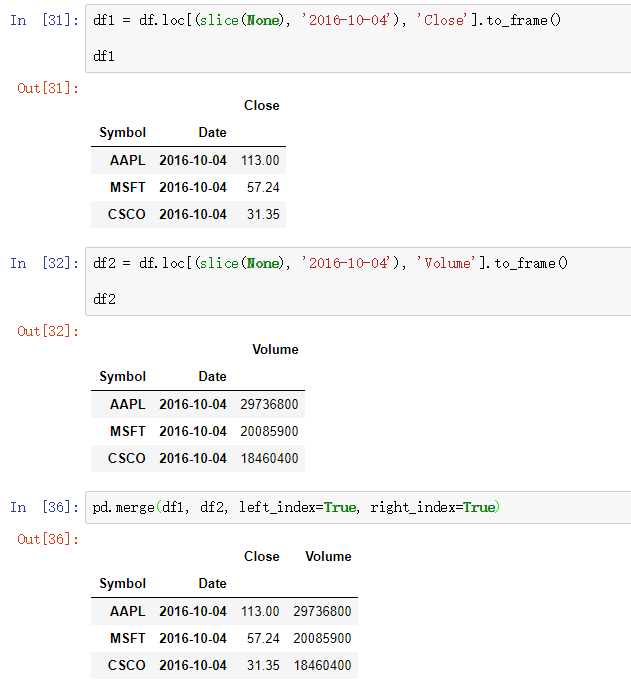
Summary
Make a long story short: Using .loc operator to choose multi-index Series and DataFrame. Using pd.merge to concate two multi-index DataFrame.
A tidy data requires: each variable must has it's own column, each observation must has it own row, each value must has it's own cell. So a multi-index data is not a tidy data. We can use .reset_index() to change it into tidy data.